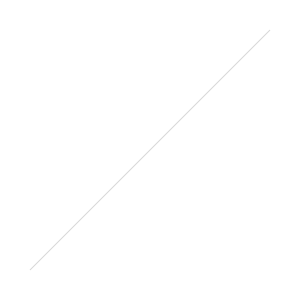Sony a7R III - Early Review vs a7R II
/B&H Photo is including a free FAST SD Card with preorder!
I was part of a small pool of press who received an a7R III for an afternoon and evening of shooting. What follows are my thoughts - an early review of the a7R III and the Sony 24-105 f/4 OSS G Lens.
https://www.youtube.com/watch?v=12WqGcLm_QE
The Sony a7R II was a warning shot to Canon and Nikon to stop underestimating mirrorless. The a7R II took the lessons learned with the original a7R and provided a high megapixel camera (42.4MP) with enough autofocusing power to easily work with many Canon lenses while offering the best dynamic range in its class, a stabilized sensor, and beautiful 4k video (not cropped)! The result is that over the last two years we have seen Canon and Nikon sales stagnate while Sony has moved into 2nd place, past Nikon. Though the a7R II sold well (and
) and did entice a noticeable portion of photographers away from their DSLRs, the A7R II was not perfect. It had several drawbacks - poor battery life, a single SD card slot, just 5fps paired with a small buffer that, when full, greatly reduces camera functionality and, with the sacrifices made for the smaller body, a less desirable in-hand feel which lacked a dedicated focus point selector. The menu was a mess too. And, a few more issues that caused pro photographers concern, not directly related to the camera, too many Sony repair center horror stories and a lack of native Sony glass. I can't offer a critique of the repair department at this time except to say that Sony has recently added
Pro level repair centers in New York and LA
and clearly sees this as a priority. And, during the two years since the A7R II was released, Sony has released over a dozen lenses and now offers high-quality glass from wide to telephoto. Though, they are still missing some longer telephoto options and don't have much 3rd party support there either.
Hands-on with the Sony a7R III
https://youtu.be/FXejdcGKNIYThe AF improvements are huge! The a7R II AF does well but it wasn't something I would want to use to photograph any action or sports. Now, with the speed improvements in the a7R III, Sony states the AF is twice as fast as the previous model. This coupled with a greatly improved eye-AF system results in an incredibly capable camera that makes nailing focus easy. Again and again, I watched it accurately track erratically moving dancers and the eye-af worked great for nailing portraits of still or moving subjects - as long as an eye was somewhat visible. No, it wasn't perfect - I saw AF confusion a few times but overall the AF hit rate was much higher than a comparably priced DSLRs AND the eye-AF made it easy- I don't even need to move the focus point near the eye - the camera just finds it and locks on. The Sony A7R III is now a camera capable of handling real action.
Walking portraits - with eye-af focus was idiot proof and easily locked onto and tracked the eye closest to you.
Improved Ergonomics and Usability
Sony A7RII Focus Point Selector
Custom buttons on the a7R III
Sony a7R III Dual Card Slots
Sony a7R III Battery - Doubles Battery Life
The dedicated joystick (focus point selector) for selecting AF point and a touch to AF LCD screen make this camera MUCH more user-friendly. Along with a dedicated AF-on button as well as an AEL button (that I recommend you assign Eye-AF) greatly increase the usability of this camera. Overall, the ergonomics of this camera are improved, including the location of the record button. However, if you don't like the small grip size or feel that the space between grip and lens is tight on the a7R II or a9, you will still be disappointed as the a7R III is virtually identical to the a9 and feels the same in my hands. One item I noticed - the customizability of many buttons has been further improved with a huge list of assignable functions.Dual Card Slots! SD, not XQD. One is UHS-II, and I recommend Sony 64GB SF-G Series UHS-II SDXC. You can set the cards up to record RAW to one and JPEG to the other or stills to one and video to the other or simultaneous write (backup) or relay - as one card fills, it switches seamlessly to the other.Battery life has more than doubled from the Sony a7R II. The Sony a7R III uses the new A9 battery, the Sony NP-FZ100, which more than doubles battery life.I shot 1845 photos with the a7R III and 20 minutes of video - that used less than 50% of the battery! And, almost this entire time when I wasn't taking photos, I was playing with the menu and connecting to wifi. We should also see a serious improvement in cold weather performance (I will be testing the A7R III in Alaska in early December). Sony has also added a USB-C 3.1 port and the standard micro USB which means additional charging options while shooting, tethering or connected to a remote trigger or intervalometer. You can also use the a9 battery grip with the a7R III.The 10 FPS makes this a much more versatile camera making it capable of handling sports and action. Having the same speed silently with the electronic shutter is also impressive, though limited, as I do see some rolling shutter issues with moving subjects - this sensor cannot be read-off as fast as the a9 (which exhibits no rolling shutter in silent mode). The buffer and write speed to the card has been improved. In general, this is a much more responsive camera than the a7R II but, when you do fill that buffer up with uncompressed RAWS and shooting simultaneously to two cards, you will be waiting some time. I have only tested with two SD cards so will be reporting on this in more detail in my detailed review.
10fps of a spinning dancer
Upgraded a7R III Menu - now color coded
The viewfinder upgrade, now like the a9, is larger with a higher resolution screen and is bright and beautiful. It is a welcomed improvement.Image and video quality do not look drastically different from the already excellent a7R II. I will be testing more with side by side comparisons against the a7R II, Canon 5D Mark IV and Nikon D850 in the near future.The menu is still a bit of a mess, but borrowing from the a6500 and a9 systems it is now color-coded, with more helpful icons and a "my menu" section where you can place your frequently used items.No access to the play memories store - so timelapse fans will need to buy an intervalometer. BUT with the additional USB-C port you can charge the camera while running longer time-lapses. All other apps you may have used on the Sony a7R II or other models is not available in the a7R II. I do not know why they have made this choice.
Should You Buy the Sony a7R III?
I have spent only one day with the camera, but based on my experience, if you have been waiting for a Sony camera that can truly replace your DSLR or you are an a7r or a7ii shooter, this is a camera I can happily recommend. Should a7R II users consider upgrading? I have decided to upgrade based on the increased AF and usability of this camera. I love the a7R II image quality and for landscape or general travel it has been a fantastic camera but anytime I found myself shooting portraits or action (wildlife in Tanzania last year) I was frustrated with the usability of the camera - slow to move focus point, slow to respond after shooting a burst. The upgrades the camera provides in this area are enough for me to make the move. Pair the new Sony a7R III with the new 24-105 f/4 G OSS lens and you have a fantastically versatile camera.Videographers should you buy the Sony a7R III? - No, you should wait and see what the A7S III will bring - hopefully 4k at 60fps.Should you buy the a7R II or the a7R III - With only a slight difference in image quality it comes down to speed and useablity. Do you need the increased speed of AF and do you want a camera that is the more DSLR like in its control and operation? The existing Sony a7R II is still a fantastic camera and an excellent value.I love answering your questions and will be back with more hands-on and answers to your questions in the next couple of weeks. Be sure to watch the linked video and leave your question in the comments.
Preorder the a7R III from B&H Photo
A FEW RAW FILES FROM THE SONY A7R IIISAMPLE IMAGES








 You trade off some features for the smaller size of the Spark. While the Mavic is capable of 24 minutes flight time, closer to 30 with the new Platinum. The Spark offers just 16 minutes in ideal conditions and in flying both of these - I am almost always done with getting the shots I need with the Mavic and have plenty of battery left. With the Spark, it feels fairly urgent to get the shots I need in that shorter timeframe. The Mavic is faster and while you can switch the Spark into sports mode I have struggled to get very cinematic looking shots when it that mode, the Mavic in normal mode is fast enough and remains smoothly controllable. You also sacrifice range - the Mavic can be flown nearly 4 miles away, the Spark just over a mile when using the controllers for each- honestly here in the United States, you need to keep them both in sight at all times so the difference doesn’t bother me much. And it’s important to mention that the spark at $500 does not come with a controller - you control with the DJI app on your phone - that range is much more limited, just 100 meters and while the Mavic is capable of this too it’s really not something I recommend. The lack of tactile feedback and trying to keep your eyes on the drone plus the screen that your fingers are partially obscuring just make it awkward.
You trade off some features for the smaller size of the Spark. While the Mavic is capable of 24 minutes flight time, closer to 30 with the new Platinum. The Spark offers just 16 minutes in ideal conditions and in flying both of these - I am almost always done with getting the shots I need with the Mavic and have plenty of battery left. With the Spark, it feels fairly urgent to get the shots I need in that shorter timeframe. The Mavic is faster and while you can switch the Spark into sports mode I have struggled to get very cinematic looking shots when it that mode, the Mavic in normal mode is fast enough and remains smoothly controllable. You also sacrifice range - the Mavic can be flown nearly 4 miles away, the Spark just over a mile when using the controllers for each- honestly here in the United States, you need to keep them both in sight at all times so the difference doesn’t bother me much. And it’s important to mention that the spark at $500 does not come with a controller - you control with the DJI app on your phone - that range is much more limited, just 100 meters and while the Mavic is capable of this too it’s really not something I recommend. The lack of tactile feedback and trying to keep your eyes on the drone plus the screen that your fingers are partially obscuring just make it awkward. Difference in the external controllers too with the Mavic providing an LCD screen with some basic info (though everything important is also displayed through the app so you don’t really miss out on info but I find it nice to have my altitude and distance in a dedicated spot), you also have a 5 way configurable stick that is replaced by a simple button on the Spark controller and a few additional customizable buttons on the Mavic controller.
Difference in the external controllers too with the Mavic providing an LCD screen with some basic info (though everything important is also displayed through the app so you don’t really miss out on info but I find it nice to have my altitude and distance in a dedicated spot), you also have a 5 way configurable stick that is replaced by a simple button on the Spark controller and a few additional customizable buttons on the Mavic controller. But of course the Spark can be flown without any controller at all via gesture mode and not something available on the Mavic - it feels a bit gimmicky and at times I struggled to get it to do much other than take off and land on my palm but when it works it is fun to use and certainly impresses your friends.
But of course the Spark can be flown without any controller at all via gesture mode and not something available on the Mavic - it feels a bit gimmicky and at times I struggled to get it to do much other than take off and land on my palm but when it works it is fun to use and certainly impresses your friends. Both cameras share the same sensor though the mavic is capable of shooting RAW stills that gives you more editing capabilities, offers a slightly wider fixed aperture f/2.2 vs f/2.6 in the spark and, shooting 4k video with 3 axis gimbal support vs just 1080 and 2 axis gimbal in the Spark at a lower bit rate. I my testing I certainly see an advantage with the Mavic in stills and video quality, especially in lower light. The spark isn’t bad - it just feels a touch behind what the Mavic provides in quality. I haven’t really noticed a difference between the 2 axis and 3 axis gimbals - the spark video looks just as stable smooth.
Both cameras share the same sensor though the mavic is capable of shooting RAW stills that gives you more editing capabilities, offers a slightly wider fixed aperture f/2.2 vs f/2.6 in the spark and, shooting 4k video with 3 axis gimbal support vs just 1080 and 2 axis gimbal in the Spark at a lower bit rate. I my testing I certainly see an advantage with the Mavic in stills and video quality, especially in lower light. The spark isn’t bad - it just feels a touch behind what the Mavic provides in quality. I haven’t really noticed a difference between the 2 axis and 3 axis gimbals - the spark video looks just as stable smooth. You do see a noticeable difference in control options for both photos and video in the app - Not only does the Mavic provide the RAW shooting you have color profiles for video and you can customize the speed of the gimbal for very controlled, cinematic looking shots - not possible on the Spark.
You do see a noticeable difference in control options for both photos and video in the app - Not only does the Mavic provide the RAW shooting you have color profiles for video and you can customize the speed of the gimbal for very controlled, cinematic looking shots - not possible on the Spark. The Spark is cheaper, lighter, smaller and in some ways more fun to fly but does not provide 4k and its image quality/video quality is decent but not quite as good as the Mavic.The Mavic costs more but offers image and video quality that I love using in my travel videos along with the extended flight time and faster speed while remaining cinematic and still being portable enough to bring along just about everywhere.I think the Spark makes a great first drone but the Mavic has those additional advantages that make it worthwhile for the serious content creators that need to travel.I recommend the Fly More Combo for both drones - the extra batteries are useful and having the multi-charger for both drones makes a big difference in how quickly you can get flying again. I recommend buying from B&H Photo - no sales tax outside of NY state.
The Spark is cheaper, lighter, smaller and in some ways more fun to fly but does not provide 4k and its image quality/video quality is decent but not quite as good as the Mavic.The Mavic costs more but offers image and video quality that I love using in my travel videos along with the extended flight time and faster speed while remaining cinematic and still being portable enough to bring along just about everywhere.I think the Spark makes a great first drone but the Mavic has those additional advantages that make it worthwhile for the serious content creators that need to travel.I recommend the Fly More Combo for both drones - the extra batteries are useful and having the multi-charger for both drones makes a big difference in how quickly you can get flying again. I recommend buying from B&H Photo - no sales tax outside of NY state.



 Shop all the DJI Spark colors at B&H Photo
Shop all the DJI Spark colors at B&H Photo











 [/himage]BracketingThe GX80 comes with several bracketing options. For focus bracketing (focus stacking) for example you can configure how many images you wish to have and the step size for the focus. This feature seems to work very well when importing into Adobe PhotoShop and using the stacking functionality. The GX80 also offers aperture bracketing and WB bracketing.Viewfinder/Touchscreen DisplayThe electronic viewfinder (EVF) is taken straight from the GX7, however on the GX80 it no longer tilts upwards. It has a diopter setting on the right hand side and is a 2764K high resolution unit with 16:9 aspect ratio and 0.7x magnification. Some people report seeing rainbow patterns due to the field-sequential LCD used in this viewfinder.The rear 3″ display is tiltable as per the GX7 – 90° looking down onto it and about 45° looking upwards. It is not fully articulated, which I personally prefer. It seems better than the one on the GX7, especially in sunlight. The GX80 has a 60 FPS refresh rate which makes LiveView look very smooth, but may come with the cost of reduced battery life.Wi-FiWi-Fi is pretty much unchanged from the GX7 implementation however, the GX80 lacks NFC capability. With Wi-Fi you can connect to your mobile phone, using the Panasonic Image App, or your computer. When using the app you can copy photographs locally to your phone or use it as a remote control for your camera. Performance is pretty good when I tested it with the iPhone 6s Plus. It is also possible to setup a share on your computer and send your photos to it. Using LightRoom it is then possible to monitor this share and emulate tethering functionality – however I found this to be incredibly slow, probably due to the USB 2.0 port on the camera.Battery/ChargingThe GX80 does not come with a charger. You have to charge the battery in camera via the supplied USB cable. If you were thinking of having an external battery pack plugged in then you will be disappointed as you cannot use the camera whilst it is being charged this way. I purchased a couple of extra third party batteries and a charging cradle for about 20€. Whilst I was shooting at this years Comic-Con in Germany I noticed that the camera body had gotten quite warm and the third party battery only lasted for about 50 shots. With the official Lumix battery it was considerably better, however after my previous experience I was being extremely careful and ensuring that I turned off the camera if I wasn´t shooting for any length of time. I also turned down the display brightness and changed its refresh rate to 30 instead of 60.ConclusionThis is a fun little camera with a micro four thirds sensor that has a few niggles, but nothing onerous. It offers really nice image quality for photos and 4K video as well as a whole host of interesting little extras for a very good price. The dual IS system is amazing, easily on par with Olympus´s system and probably a taste of things to come with the GH5. The GX8 has a few advantages over the GX80 – namely the 20MP sensor, weather sealing and a mic input. However in Europe the GX8 is still a fairly expensive camera coming in at over 1000€ body only. The GX80 is currently priced at 699€ with the 12-32mm kit lens and is far better value for money. For me the GX80 features easily make it a better choice over the GX8.
[/himage]BracketingThe GX80 comes with several bracketing options. For focus bracketing (focus stacking) for example you can configure how many images you wish to have and the step size for the focus. This feature seems to work very well when importing into Adobe PhotoShop and using the stacking functionality. The GX80 also offers aperture bracketing and WB bracketing.Viewfinder/Touchscreen DisplayThe electronic viewfinder (EVF) is taken straight from the GX7, however on the GX80 it no longer tilts upwards. It has a diopter setting on the right hand side and is a 2764K high resolution unit with 16:9 aspect ratio and 0.7x magnification. Some people report seeing rainbow patterns due to the field-sequential LCD used in this viewfinder.The rear 3″ display is tiltable as per the GX7 – 90° looking down onto it and about 45° looking upwards. It is not fully articulated, which I personally prefer. It seems better than the one on the GX7, especially in sunlight. The GX80 has a 60 FPS refresh rate which makes LiveView look very smooth, but may come with the cost of reduced battery life.Wi-FiWi-Fi is pretty much unchanged from the GX7 implementation however, the GX80 lacks NFC capability. With Wi-Fi you can connect to your mobile phone, using the Panasonic Image App, or your computer. When using the app you can copy photographs locally to your phone or use it as a remote control for your camera. Performance is pretty good when I tested it with the iPhone 6s Plus. It is also possible to setup a share on your computer and send your photos to it. Using LightRoom it is then possible to monitor this share and emulate tethering functionality – however I found this to be incredibly slow, probably due to the USB 2.0 port on the camera.Battery/ChargingThe GX80 does not come with a charger. You have to charge the battery in camera via the supplied USB cable. If you were thinking of having an external battery pack plugged in then you will be disappointed as you cannot use the camera whilst it is being charged this way. I purchased a couple of extra third party batteries and a charging cradle for about 20€. Whilst I was shooting at this years Comic-Con in Germany I noticed that the camera body had gotten quite warm and the third party battery only lasted for about 50 shots. With the official Lumix battery it was considerably better, however after my previous experience I was being extremely careful and ensuring that I turned off the camera if I wasn´t shooting for any length of time. I also turned down the display brightness and changed its refresh rate to 30 instead of 60.ConclusionThis is a fun little camera with a micro four thirds sensor that has a few niggles, but nothing onerous. It offers really nice image quality for photos and 4K video as well as a whole host of interesting little extras for a very good price. The dual IS system is amazing, easily on par with Olympus´s system and probably a taste of things to come with the GH5. The GX8 has a few advantages over the GX80 – namely the 20MP sensor, weather sealing and a mic input. However in Europe the GX8 is still a fairly expensive camera coming in at over 1000€ body only. The GX80 is currently priced at 699€ with the 12-32mm kit lens and is far better value for money. For me the GX80 features easily make it a better choice over the GX8.
 a6300 Spoiler Review - This is the best hybrid (photos & video) camera you can buy at this price point: focus is impressive, low light capabilities are some of the best I have seen in a crop sensor and 4K video looks great. A few small issues hold this camera back from perfection but I would very happy to walk out the door with the Sony a6300 for just about any photo or video task.The Good -Focus system works as advertised, We shot wake boarders, parkour athletes and salsa dancers and I was impressed with the speed and tracking capabilities. In one example I watched the tracking squares lock on and follow a sprinting, tumbling athlete cross from one corner of the frame to the other. - He moved by people, intersecting objects and it capably tracked him. When I compare this system to the Sony a7RII or the a6000 I see noticeable improvements and increased intelligence. One of my big complaints about sony is picking the focus point - no touchscreen and no dedicated joystick make it difficult but with the increased smarts the camera selected my subject most of the time and when it didn't a new feature to the a6300 - focus selector, helps. This allows you to use the directional pad on the back as a joystick to move your focus points without an extra button press. This does require an extra press to get into the other functions of the directional pad- e.g. ISO, exposure compensation ect. So not perfect but I appreciate the choice.Focus during movies - good, with customizability on speed. I will have more to say after I send time carefully reviewing all the footage I shot.a6300 Photo Quality - Despite sharing the same MPs (24) as the a6000 they did redesign the sensor, increasing copper blah blah, do you really care. I don't I just want to know the result, and I believe this will be the new king of APS-C low light performance. I shot 12,800 images that while noise was certainly present it was far below what I expected and I would be happy to deliver those images to a client or bride.
a6300 Spoiler Review - This is the best hybrid (photos & video) camera you can buy at this price point: focus is impressive, low light capabilities are some of the best I have seen in a crop sensor and 4K video looks great. A few small issues hold this camera back from perfection but I would very happy to walk out the door with the Sony a6300 for just about any photo or video task.The Good -Focus system works as advertised, We shot wake boarders, parkour athletes and salsa dancers and I was impressed with the speed and tracking capabilities. In one example I watched the tracking squares lock on and follow a sprinting, tumbling athlete cross from one corner of the frame to the other. - He moved by people, intersecting objects and it capably tracked him. When I compare this system to the Sony a7RII or the a6000 I see noticeable improvements and increased intelligence. One of my big complaints about sony is picking the focus point - no touchscreen and no dedicated joystick make it difficult but with the increased smarts the camera selected my subject most of the time and when it didn't a new feature to the a6300 - focus selector, helps. This allows you to use the directional pad on the back as a joystick to move your focus points without an extra button press. This does require an extra press to get into the other functions of the directional pad- e.g. ISO, exposure compensation ect. So not perfect but I appreciate the choice.Focus during movies - good, with customizability on speed. I will have more to say after I send time carefully reviewing all the footage I shot.a6300 Photo Quality - Despite sharing the same MPs (24) as the a6000 they did redesign the sensor, increasing copper blah blah, do you really care. I don't I just want to know the result, and I believe this will be the new king of APS-C low light performance. I shot 12,800 images that while noise was certainly present it was far below what I expected and I would be happy to deliver those images to a client or bride.



 Yongnuo, the company that makes some of
Yongnuo, the company that makes some of 







